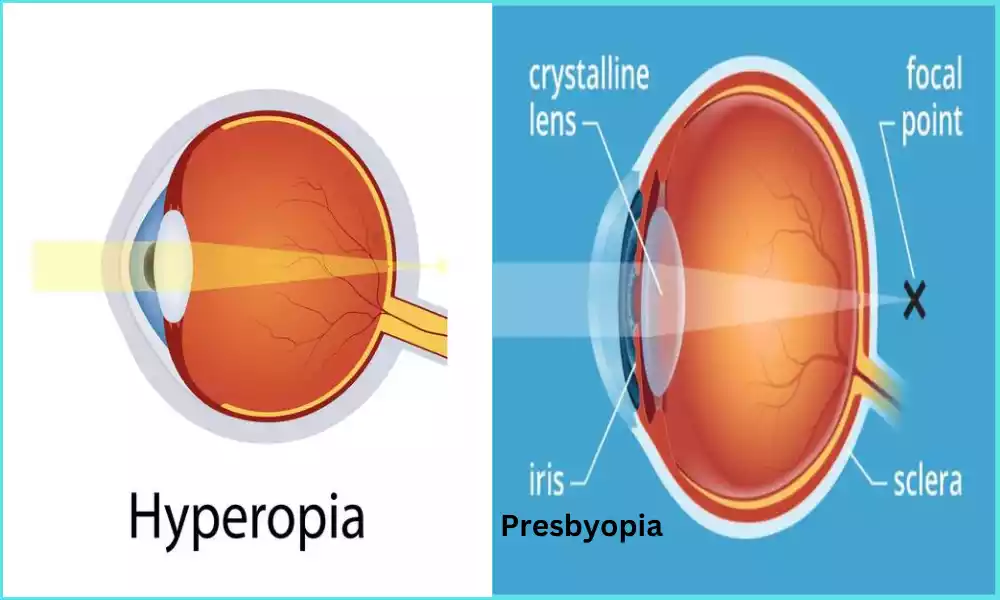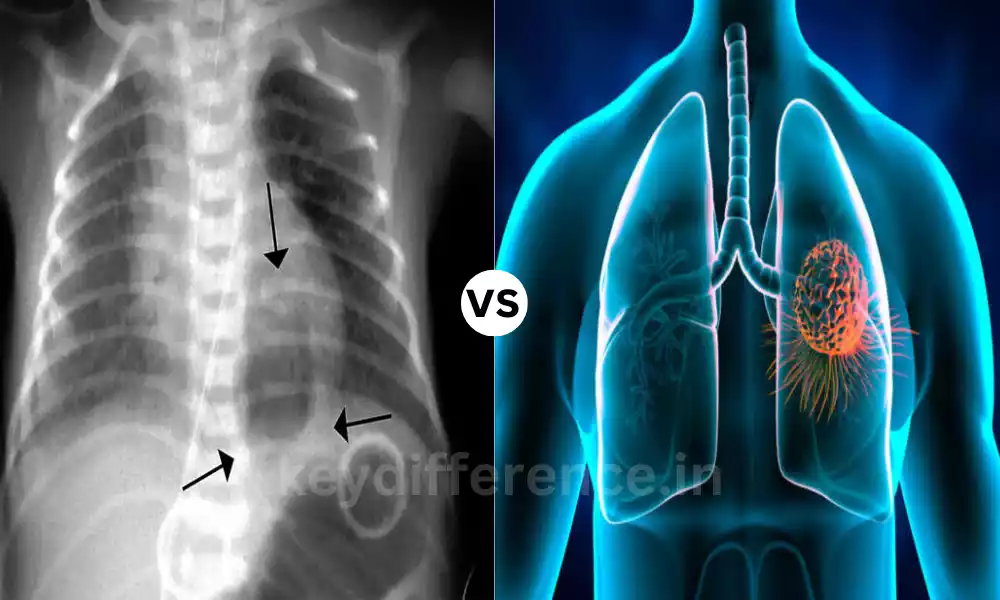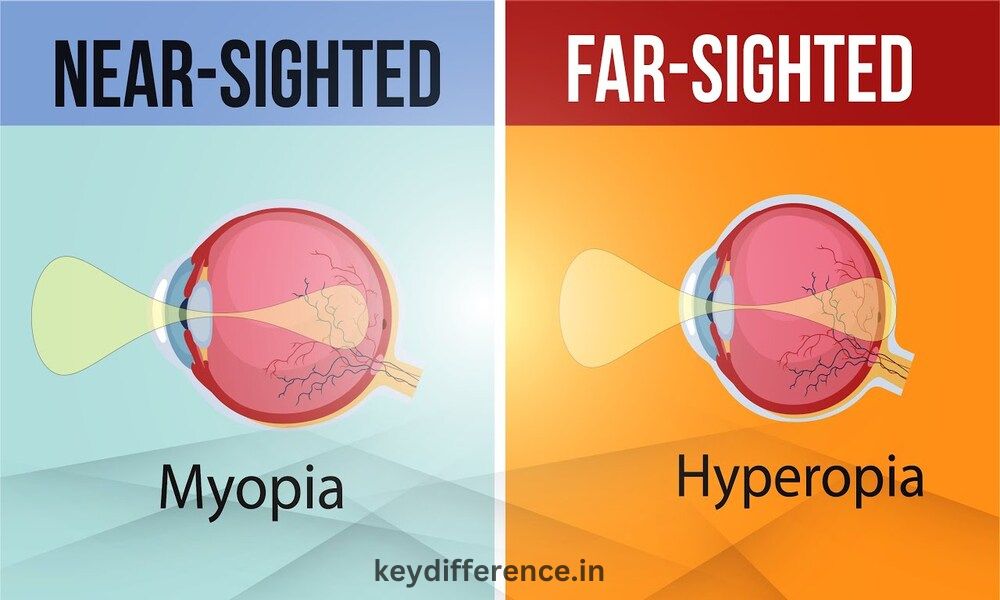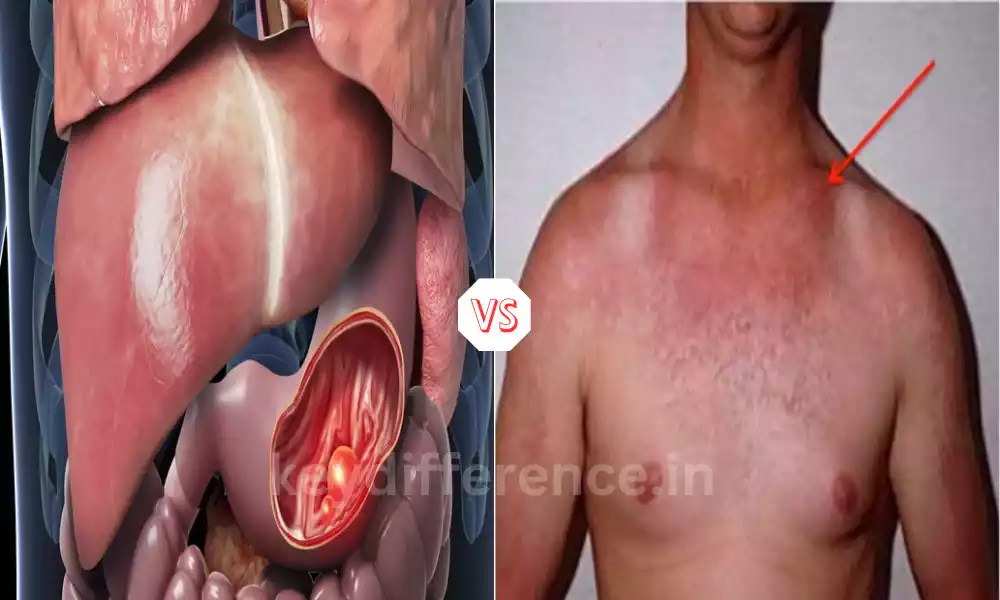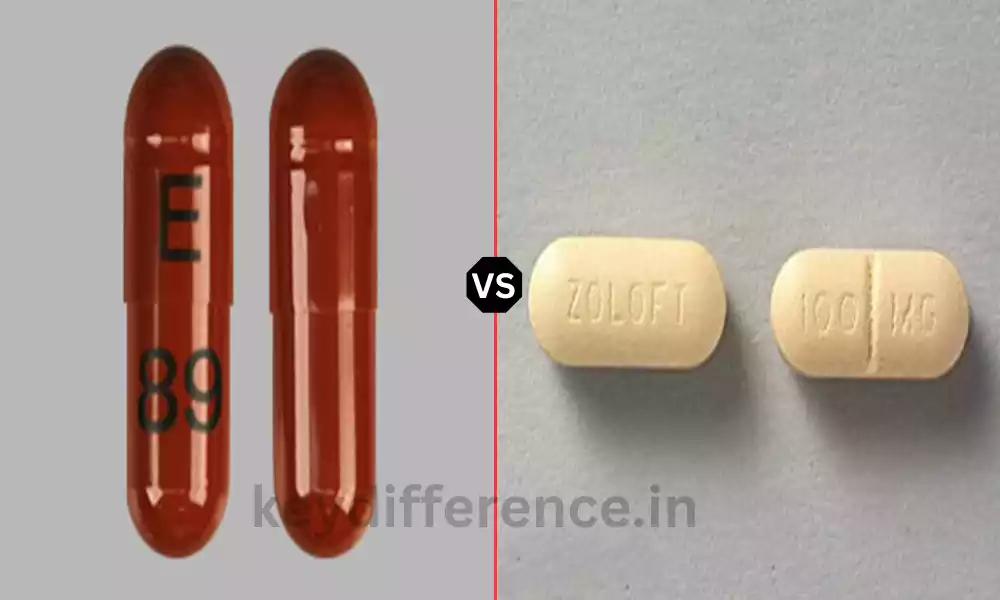At some point in life, most people experience vision problems understanding which type is affecting you is critical for successful treatment. Here, we explore two of the more frequently misunderstood vision impairments Hyperopia and Presbyopia.
Both conditions affect your ability to see objects up close but arise for different reasons and require different forms of treatment it is, therefore, crucial that understanding their differences helps ensure proper diagnosis and care for your eyes.
Definition of Hyperopia
Hyperopia, more commonly referred to as farsightedness, is a refractive error in which distant objects are perceived more clearly than near ones.
This typically happens when either one eye is too short relative to the curvature of its cornea and lens or both are too flat, leading to the improper focus of light rays causing images to form behind rather than directly onto the retina.
Under normal conditions, light rays focus directly onto the retina–the light-sensitive tissue at the back of your eye–for a clear image. But with hyperopia, light rays focus beyond this point and appear blurry when focused near objects.
Symptoms of Hyperopia
Blurry vision when focusing on nearby objects Squinting in order to see clearly, Eye strain or discomfort after prolonged close work like reading or computer use, and headaches after tasks requiring near focus.
Diagnosis and Treatment
Hyperopia can usually be diagnosed through a comprehensive eye exam that includes tests such as retinoscopy or refraction testing, with corrective lenses like eyeglasses or contact lenses used to adjust the focal point to bring it back onto the retina, alternatively, surgical solutions like LASIK might be considered an option in certain instances.
Consult an eye care professional for an accurate diagnosis and to discuss treatment plans tailored specifically to your needs.
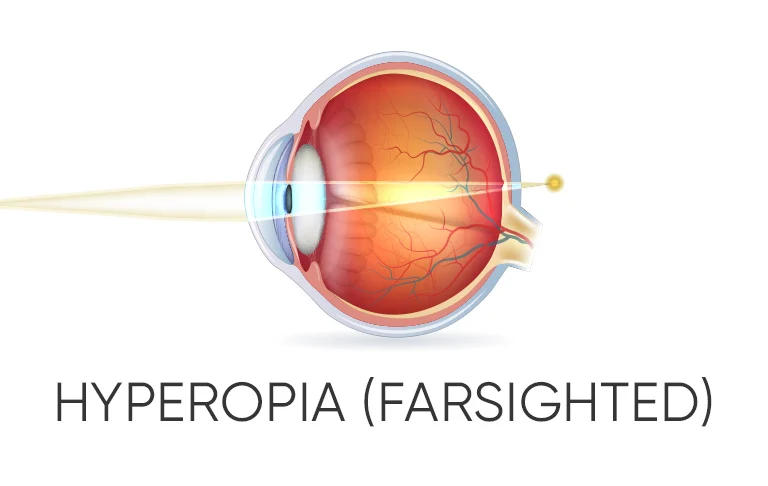
Definition of Presbyopia
Presbyopia is a natural age-related decrease in one’s eyesight’s ability to focus on nearby objects.
While hyperopia, which develops early on in life or early childhood, can occur at birth or early childhood, presbyopia usually begins affecting people around age 40 or later and often stems from reduced elasticity and flexibility of their eye’s crystalline lens, and weakening of ciliary muscles responsible for changing its shape to focus on near objects.
Presbyopia renders it increasingly difficult for those affected to read small print, work on computers, and complete other close-up tasks without corrective lenses. Their distance of focus on close objects gradually decreases until eventually they must hold reading materials or objects at arm’s length in order to see clearly.
Symptoms of Presbyopia Reading small text such as on a smartphone or book becomes difficult. Holding materials further away to see clearly requires having to hold reading materials farther back, which may cause eye strain or headaches after close-up work, as well as difficulty focusing on close objects in low light conditions.
Diagnosis and Treatment Presbyopia can typically be diagnosed through a comprehensive eye exam conducted by an eye care provider. An array of focus and reading tests, among other measures, may be conducted in order to gauge its severity.
As treatment typically includes reading glasses or multifocal lenses (for those who already wear corrective lenses for other refractive errors, an adjustment in prescription may be required), treatment often includes reading glasses as a measure against this condition.
Optics surgery such as lens implants or corneal inlays may also provide viable solutions.
Consult a certified eye care professional for an accurate diagnosis and the most suitable treatment options to address your condition.
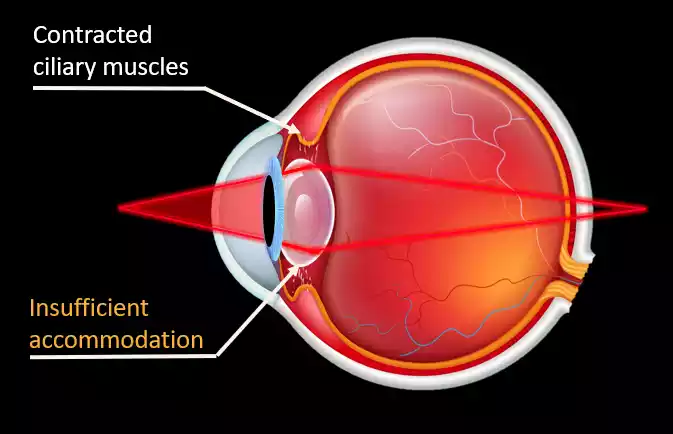
Comparison Table of Hyperopia and Presbyopia
| Feature | Hyperopia (Farsightedness) | Presbyopia |
|---|---|---|
| Definition | Difficulty focusing on close objects due to light focusing behind the retina. | Age-related difficulty in focusing on close objects due to decreased lens flexibility. |
| Age of Onset | Can occur at any age, including birth or early childhood. | Generally starts around age 40 and progresses with age. |
| Cause | Eye too short or cornea/lens too flat. | Loss of lens elasticity and weakening of ciliary muscles due to aging. |
| Affected Vision | Close objects are blurry while distant objects are clearer. | Difficulty in focusing on close objects, regardless of distance vision. |
| Symptoms | Blurry close vision – Eye strain – Headaches | Difficulty reading small text – Holding reading material at arm’s length – Eye strain or headaches after close-up work |
| Diagnostic Tests | Eye examination – Refraction tests – Retinoscopy | Comprehensive eye examination – Reading tests – Focus tests |
| Treatment | Corrective lenses (eyeglasses or contacts) – Refractive surgery (e.g., LASIK) | Reading glasses – Bifocal or multifocal lenses – Surgical options (e.g., lens implants) |
| Progression | May require changes in prescription but is generally stable. | Gradual worsening with age, requiring regular updates to lens prescriptions. |
| Genetic Factor | Can run in families. | Age-related is not generally hereditary but can be influenced by lifestyle and health. |
| Associated Risk Factors | Family history – Other eye conditions | Aging – Pre-existing refractive errors |
Note: Always consult an eye care professional for accurate diagnosis and appropriate treatment options tailored to your specific needs.
Importance of understanding the difference between them
Understanding the differences between farsightedness (hyperopia) and presbyopia is critical to accurate diagnosis, effective treatment, and long-term eye health. Here are a few reasons why knowing these conditions apart is so essential:
Accurate Diagnosis
Misidentifying one condition as another can result in inaccurate prescriptions and treatments that fail. A comprehensive eye exam typically includes several tests to accurately identify your eye problem; an accurate diagnosis is key to developing an effective treatment plan.
Appropriate Treatment
Hyperopia requires different approaches from those for presbyopia; hyperopia can often be corrected using single-vision lenses while presbyopia frequently requires multifocal lenses or even bifocals for effective correction.
Surgical interventions may vary, with procedures like LASIK often being more suitable for hyperopia and lens implants being an option for presbyopia.
Age-Related Considerations
Hyperopia and presbyopia affect people of any age; knowing this will allow you to plan for future eye care needs more effectively.
Knowing the differences can prepare individuals who already suffer from hyperopia for any additional changes they might face as they age. Knowing their options helps prepare for potential scenarios they might face in terms of visual clarity.
Lifestyle Adjustments
Both conditions necessitate various lifestyle adaptations. Understanding what changes might occur will enable you to make adjustments as necessary in your daily activities, such as positioning of reading materials or screen time restrictions, or when and where you read.
Cost and Financial Planning
Costs can differ depending on your condition and treatment regimen; planning the finances associated with eye care (i.e. possible need for special lenses or surgery) becomes much simpler when you know which condition it’s dealing with.
Family Planning
Hyperopia tends to run in families, so its diagnosis may provide important insight for planning family plans. By contrast, presbyopia tends to develop with age rather than hereditarily, although lifestyle and overall health factors can have an impactful influence.
Health Monitoring
Gaining insight into your specific condition helps you recognize any changes as you age. For instance, farsighted people should keep an eye out for any symptoms of presbyopia that worsen close-up vision significantly – this would indicate a need for new eye exams and perhaps different treatment approaches as you progress through life.
Better Communications with Healthcare Providers
Knowledge about your specific condition can lead to more effective and insightful discussions with healthcare providers.
Knowledge of the differences between hyperopia and presbyopia is paramount for maintaining good eye health, making informed treatment choices, and planning ahead for the future.
Similarities – Hyperopia and Presbyopia
Hyperopia and presbyopia are both separate conditions with different causes and mechanisms; however, they share certain similarities:
Issues with Near Vision Both conditions present themselves through difficulty focusing on nearby objects, making tasks such as reading or needlework challenging.
Difficulty with Near Vision
Corrective Lenses Corrective lenses can help correct both hyperopia and presbyopia. While regular corrective lenses may suffice in treating hyperopia, presbyopia typically necessitates special lenses like bifocals or multifocal for effective correction.
Eye Strain and Discomfort
Long periods of close work such as reading or computer work can often cause eye strain, while headaches and eye fatigue are other symptoms for both conditions.
Diagnostic Methods
An eye examination is key in diagnosing both conditions. Common tests include visual acuity exams, refraction testing, and possibly even retinoscopy.
Treatments Involving Surgery
Treatment Options Employing Surgery Although surgical approaches for both conditions vary, both offer surgery-based solutions to alleviate symptoms. Hyperopia may be corrected through refractive surgery like LASIK while presbyopia has lens implants or corneal inlays as possible treatments.
Lifestyle Impact
Their lifestyle impacts can also vary. Both conditions can have an immense effect on quality of life, particularly when engaging in tasks requiring near vision.
Adjustment Period for New Prescriptions
It may take your eyes and mind some time to adapt to their new way of seeing; especially if they’re dealing with hyperopia or presbyopia. When first starting to use corrective lenses for either condition, there will likely be an initial period of adjustment before full comfort is attained.
Periodic Eye Exams
Routine eye examinations for both conditions should be scheduled regularly in order to monitor changes and adjust treatment as necessary. Over time, prescriptions may need to be adjusted or changed as presbyopia worsens with age and the degree of hyperopia varies.
At times, people may experience both hyperopia and presbyopia simultaneously, necessitating lenses to address both issues simultaneously — for example, multifocal lenses which contain prescriptions for distance and near vision.
Reference Books
General Ophthalmology
- “Vaughan & Asbury’s General Ophthalmology” by Paul Riordan-Eva and James J. Augsburger
- This book provides a comprehensive overview of ophthalmology, including a detailed section on refractive errors like hyperopia and presbyopia.
- “Kanski’s Clinical Ophthalmology” by Brad Bowling
- A go-to reference for many eye care professionals, this book covers a wide range of topics, including refractive errors and age-related eye conditions.
Optometry and Vision Science
- “Boorish’s Clinical Refraction” by William J. Benjamin
- This book is a key resource for understanding the science behind refractive errors, including both hyperopia and presbyopia and their correction.
- “Clinical Procedures in Optometry” by John F. Amos
- Focused on clinical practices, this book covers diagnostic procedures and treatment options for a variety of vision issues, including hyperopia and presbyopia.
Anatomy and Physiology of the Eye
- “Adler’s Physiology of the Eye” edited by Paul L. Kaufman and Albert Alm
- A comprehensive look at the physiology of the eye, including details on why conditions like hyperopia and presbyopia occur.
- “The Eye: Basic Sciences in Practice” by John V. Forrester et al.
- This book is aimed at providing basic science background related to eye diseases and conditions, including refractive errors.
Conclusion
Understanding the differences and similarities between hyperopia and presbyopia is vital for accurate diagnosis, effective treatment, and long-term eye health. Both conditions cause difficulty with near-object focusing, yet their causes differ.
Hyperopia is typically related to eye anatomy while presbyopia results from an age-related reduction in lens flexibility. Treatment options may also vary, from corrective lenses to surgery options.
Recognizing these aspects can facilitate informed decisions, better communication between healthcare providers, and enhanced quality of life.
As both conditions can have serious ramifications on daily activities and well-being, seeking assistance from an eye care specialist for diagnosis and treatment is highly advised.

